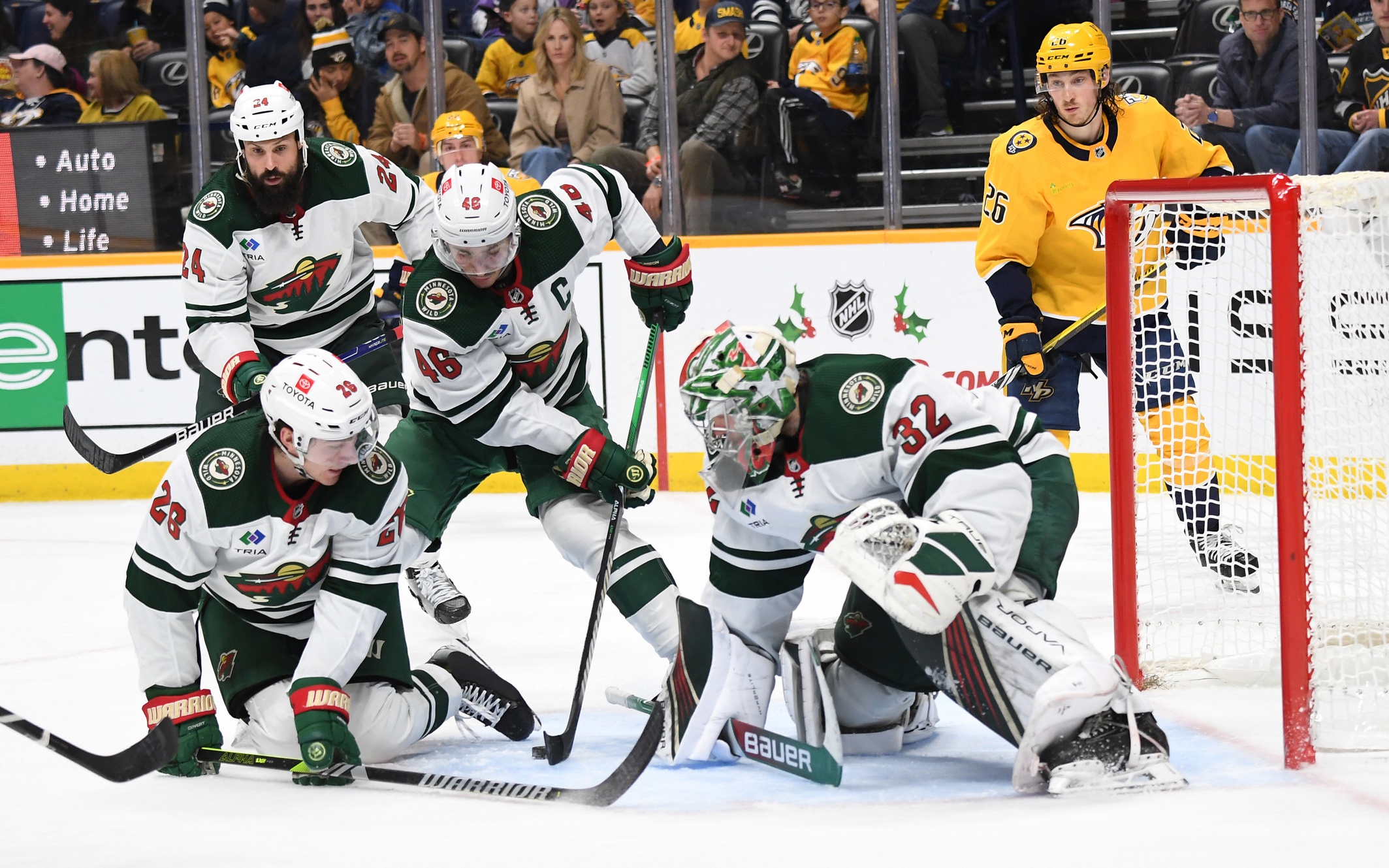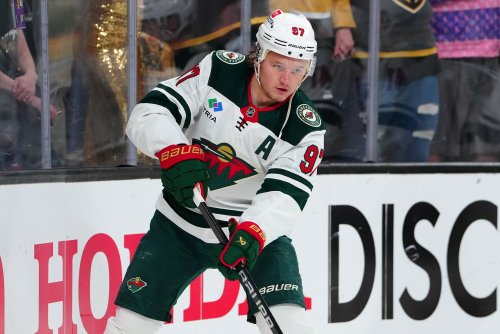
It’s only been two games, but the John Hynes era in Minnesota has gotten off to a strong start. It’s truly amazing how a 95% save percentage from your goaltender can help lead to a 2-0 record.
But make no mistake, a not-so-insignificant part of improved goaltending starts with the play in front of them. And through two games, Hynes has the Wild playing as the absolute best version of themselves. The 5-on-5 play has gotten even better, and the special teams are producing alongside that. It really has been the perfect storm coming together.
The question remains: Is it sustainable? History suggests no. A 109 PDO burner is tough to maintain. More likely, this version of the John Hynes Wild will fall somewhere between this two-game explosion and the putrid start that earned Dean Evason and Bob Woods their walking papers. But one aspect of their game, the biggest improvement so far, suggests they might end up being closer to this most recent version of themselves.
The Wild’s penalty kill was laughable through 19 games, and it was on pace to be one of the worst of all time. While it’s only been two games, and we should be wary of a small sample size, Hynes and new assistant coach Patrick Dwyer have Minnesota’s penalty kill resembling that of an NHL-level competent unit. Great goaltending is the biggest reason for it. However, a couple of minor tweaks made by the new staff on pressure points are pretty obvious.
First, it’s apparent they read Hockey Wilderness upon their hiring for the first tweak, and who can blame them? About a month ago, we highlighted how the Wild’s penalty kill was putting themselves behind the eight ball before the opposing team’s power play even entered the zone. Evason and Woods had the Wild forwards stepping up at the center red line, allowing opposing puck carriers the time and space to weave into the offensive zone and get set way too easily.
It was just far too easy for opposing power play’s to enter the zone and get set up. The Wild were forced to defend the full two minutes because they could never force a team to cough pucks up upon zone entry and send it the length of the ice. The staff had adjusted and pulled back their neutral zone pressure in the games leading up to their firing, but it still wasn’t enough.
Through two games, Hynes and Dwyer have all four players on the ice standing up right around their own blue line, effectively slowing down zone entries or thwarting them entirely.
You may not be able to cause a turnover every time, but even just one extra blue line turnover per powerplay leads to 20 fewer seconds defending in your own zone. It’s a great adjustment, and one I would foresee staying as part of their strategy.
The second adjustment Hynes has made is better understood when we go back to the beginning of the season. The Wild came out of the gates to the 2023-24 season with a clear goal to ramp up the pressure on the penalty kill. The top of their box was incredibly aggressive, leading to some comically easy goals for the opposition.
It just wasn’t working. Increasing pressure on the penalty kill has been a growing trend in the NHL recently. However, the Wild had taken that idea and asked themselves, what if we just pretend it’s 5-on-5? with their strategy. As you can see in the clip above, there was just no reason to have forwards racing up to the far corners of the defensive zone to pressure players who they had no business pressuring. It was making life easy on opposing skill players.
As they departed for Sweden in the middle of November, the staff made a 180-degree turn on strategy. Instead of pressuring, they collapsed into perhaps the smallest penalty-killing box formation I’d ever seen. To their credit, it worked -- sort of. While the next four games were better than before, their 77% success rate seemed to be their ceiling, and that style of defending is not sustainable in the NHL.
And with that, out with Evason/Woods and in with Hynes/Dwyer. It seems they took those two contrasting strategies and told the team they desperately needed to find a middle ground. And that’s exactly what has panned out over two games, going a perfect 8 for 8 on the kill.
Hynes has the top of the formation, playing with controlled aggression. We are no longer seeing players fly out to the blue line attempting to create turnovers, yet they aren’t sitting back either.
In hockey, some coaches call this “simulated pressure.” The theory is you don’t have to be skating alongside an opposing player’s hip for them to feel uncomfortable. Instead, you can simulate pressure by closing the gap while under control. Here, Foligno and Eriksson Ek aren’t flying out to the puck carrier with the intention of taking it away. Instead, they are moving close enough to make the puck carrier worry and yet not so far as to get themselves out of position should the puck rotate to another part of the powerplay formation.
Look at the clip below from the Nashville Predators game. The Wild are attempting to maintain their 1-0 early lead on Thursday. Foligno doesn’t bite on the give-and-go pass. He stays far more composed than he was a month ago and gives himself a chance to pop back out into the shooting lane and successfully block the shot.
It will be interesting to monitor if this is just the beginning of the adjustments for the new coaching staff or if they view these tweaks as just the start of a revamp. Either way, the results are encouraging. While nobody expects them to continue at a 100% success rate on the kill, all they need to do is elevate it to league average (about 80%) to get the Wild back into the playoff race.
Think you could write a story like this? Hockey Wilderness wants you to develop your voice, find an audience, and we'll pay you to do it. Just fill out this form.
-
 2
2








Recommended Comments
Join the conversation
You can post now and register later. If you have an account, sign in now to post with your account.
Note: Your post will require moderator approval before it will be visible.